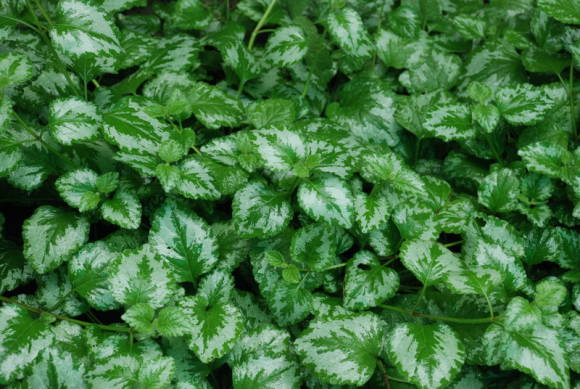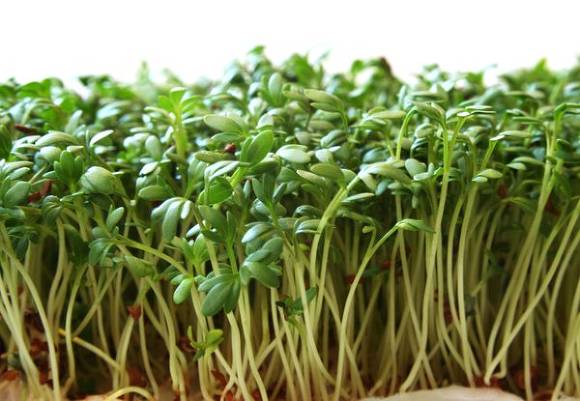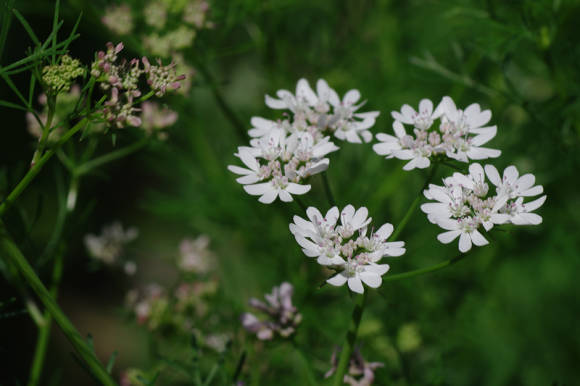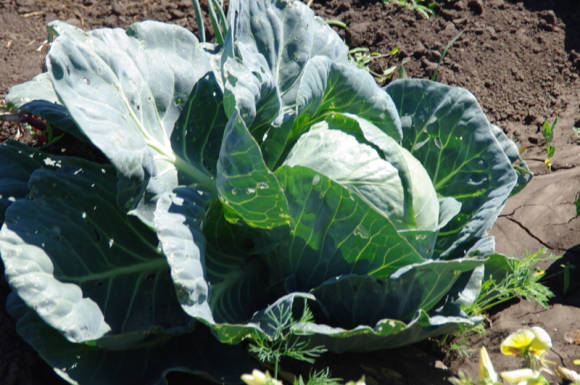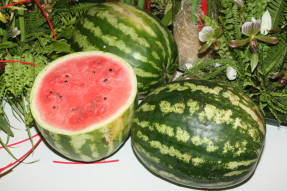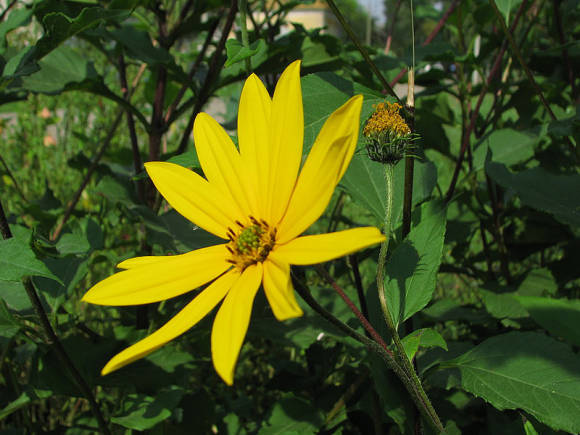Marya shines in a yellow sundress,
She is the bride, and Ivan is the groom,
He's in a blue and purple caftan
And they were given a common stem for two.
Always together in an inseparable union
Among the meadows they are found -
Ivan da Marya - in that sonorous name
A sign of faithful unmeasured love!
Alexander Soloviev
Ivan da Marya is a popular name for several completely different plants. Sometimes this is the name of the tricolor violet, sometimes the meadow sage, so in some areas it is customary to call the periwinkle and the geneva tenacious, but most often this name is known as the oak tree.

This plant attracts the eye with the unexpected appearance of its flowers, it seems that Ivan da Marya blooms at the same time with yellow and blue flowers. This color contrast makes this plant unusually spectacular and vibrant. In fact, the flowers of this plant are yellow, and above them, like an unusual umbrella, there are bright blue leaves that cover the flowers themselves.
There are a lot of popular names for this plant: meadow bell, jaundice, ivanova grass, lime plant, ivanets, brother and sister, medunka, magpie shavings, scrofulous grass.
Many folk legends are associated with this plant, mostly dedicated to forbidden love. One of the most widespread stories of folklore tells how siblings, Ivan and Marya, not knowing about their blood relationship, got married, and when they found out that they were blood relatives, they were horrified by what had happened, but they could not part. with a friend, for which they were turned by the gods into a beautiful flower, which became a symbol of fidelity.
For a long time, the Slavs endowed the flowers of Ivan da Marya with strong magical properties. It was believed that torn off on the night of Ivan Kupala, they are able to become a reliable guardian of the house from any evil forces and spells, as well as the keeper of marital happiness.

The very combination of yellow and blue colors among the Slavs was the personification of the Kupala symbols of two opposite elements - fire and water. That is why Ivan da Marya is one of the four flowers - attributes of the divination wreath for the holiday of Ivan Kupala. The Slavic peoples believed that the flower of Ivan da Marya helps to establish an alliance between man and the gods, because in it two irreconcilables - fire and water - earthly and heavenly found their union forever.
Folk legends claim that this herb helps a person achieve harmony between the elements of yin and yang, giving eternal happiness.
And in Russia, there was a custom to take a steam bath with a broom from Ivan da Marya on the Kupala night in order to gain health, beauty and well-being.
The botanical name of Ivan da Marya is oak mariannik (Melampyrum nemorosum). This is an annual semi-parasitic herb 15-50 cm high. The root is thin, weak, the plant is easily pulled out of the ground. The whole plant is covered with short whitish hairs. The stem is straight, branched. Leaves are opposite, ovate-lanceolate, long-pointed, entire. Flowers, slightly drooping, on short stalks, facing one side, are located one by one in the axils of the upper leaves, forming a loose one-sided raceme. The flower has a bright yellow corolla and a bracts of purple, blue or crimson. The calyx is tubular-bell-shaped, with four teeth, two of which are longer. The fruit is an ovoid, pointed capsule. Seeds are triangular, brown, elongated.
Ivan da Marya blooms in late spring and blooms almost all summer until autumn. The seeds of the oak grass seed germinate in autumn, in September - October they develop a long branching root. They hibernate under litter, right on the soil surface. Their further development occurs in the spring, after the snow melts.
Mariannik oak tree has adapted to the spread of its seeds in a very original way. Ants act as voluntary seed distributors.The fact is that the seeds of this plant resemble wheat grains and have "bags" with aromatic oils. And these oils are very popular with the ants, which drag the seeds. Therefore, so often dense thickets of Ivan da Marya appear along the busy forest ant paths.
This plant is a semi-parasite. There are suction cups on its roots, with the help of which it attaches to the roots of other plants and thus feeds on their sap. Ivan da Marya can parasitize on willows, hazel, alder, spruce, as well as shepherd's purse, lungwort, sleepy, significantly suppressing the development of host plants. True, after the premature death of weakened host plants, their parasite also dies.
In Russia, the oak mariannik is widespread in the forest and forest-steppe zones of the European part. More often found on the edges, sparse deciduous forests, among bushes, in damp peat meadows, on chalk slopes, forest pastures, usually forming dense thickets.

In total, the genus Mariannik has 13 species, among which the most typical for the European zone are the Mariannik oak, the Mariannik field (Melampyrum arvense), meadow mariannik (Melampyrum pratense), forest mariannik (Melampyrum silvaticum) and cut-to-length (Melampyrum laciniatum).
Ivan da Marya is a honey plant.
In addition, the oak woodworm has long been used in folk medicine, although it is poisonous. Decoctions of Ivan da Marya are used for diseases of the heart and stomach, as well as for neuralgia and epilepsy; for therapeutic baths - in the treatment of diathesis, various rashes, eczema, skin tuberculosis, rheumatism. The plant has anti-inflammatory, insecticidal and strong wound healing properties. Mariannik Dubravny is not a pharmacopoeial plant, although it is promising for pharmacological research.
Flowers, stems, leaves, and also fruits are used as medicinal raw materials. Medicinal raw materials are collected during the flowering period of the plant. Drying is carried out in well-ventilated areas.
Attention! The medicinal raw material of the oak beetle should be stored separately from other plants! The shelf life of dry raw materials is up to 10 months.
When using this plant for medicinal purposes, it should be remembered that it is very poisonous, therefore, it should be used inside with great care.
The fruits of the oak mariannik are harvested from July to September. Decoction of fruits is used to destroy harmful insects.
Mariannik oak has excellent decorative qualities. In garden design, it can be used as a curb plant or, for example, in natural-style compositions together with other medium-sized plants, picturesque driftwood and stones.
The widespread use of this plant in garden plots is hindered by the fact that the mariannik is a semi-parasite.
Today it can be seen only in the gardens of herbalists or individual plant lovers, to whom this flower most often fell by an impostor that grew from seeds brought to the site by garden ants. However, having learned to restrain his "bad" habits, you can make friends with a unique amulet plant, moreover, an extraordinary handsome man who will cause genuine surprise and admiration for your guests.


